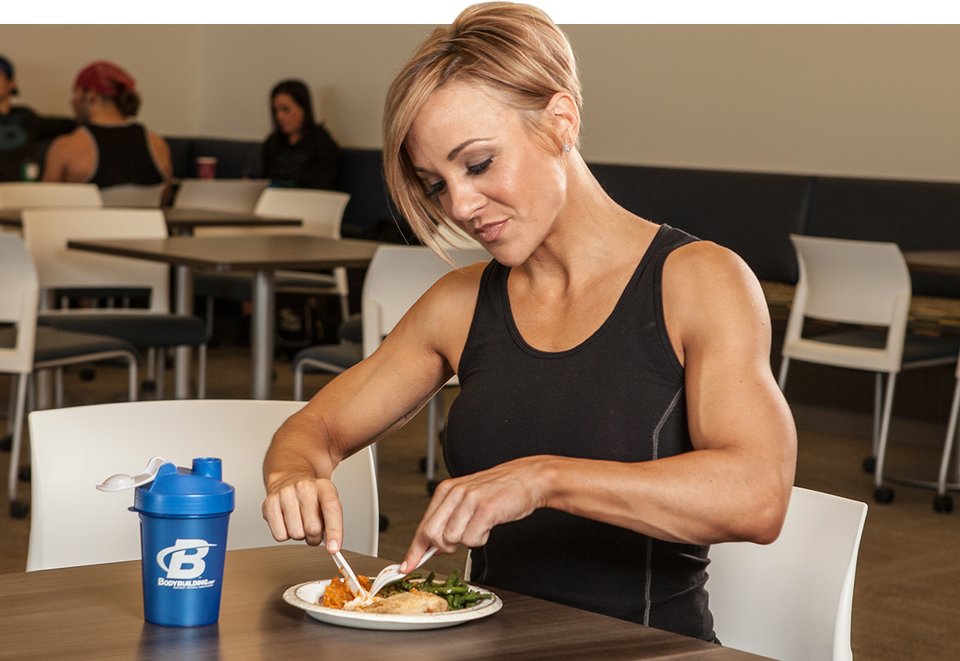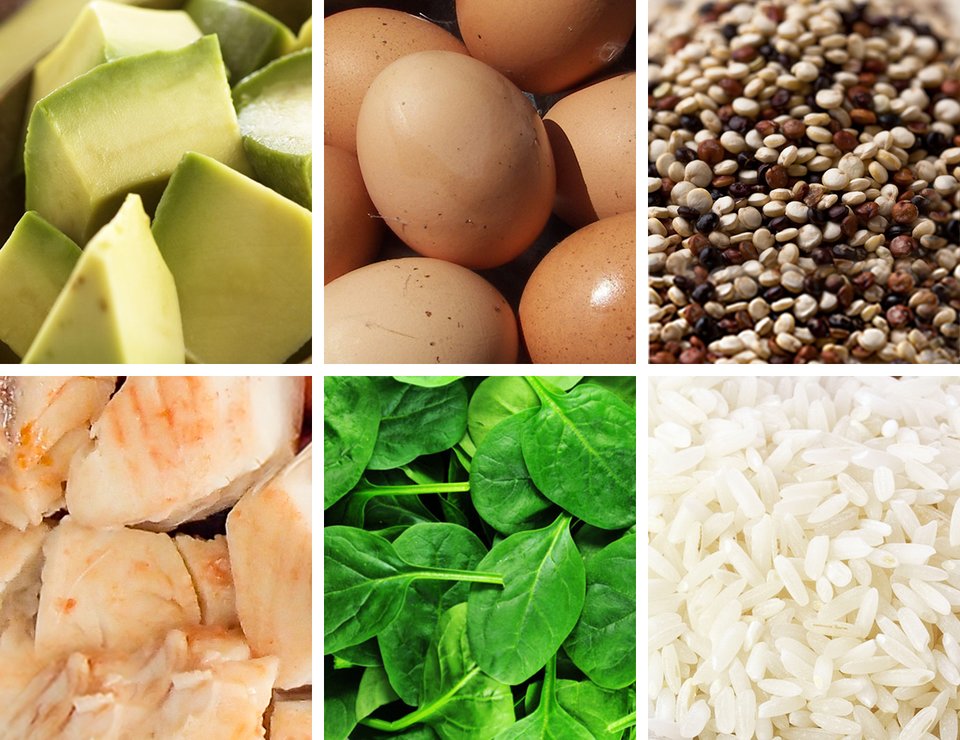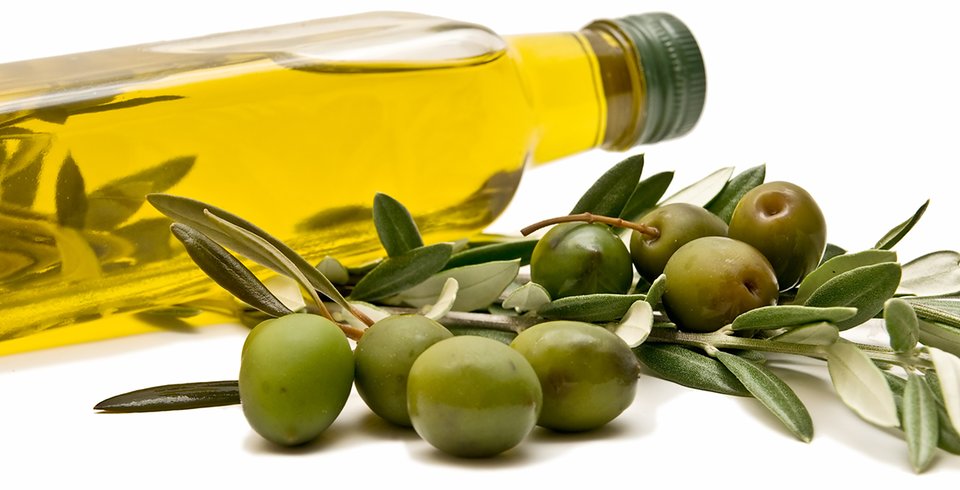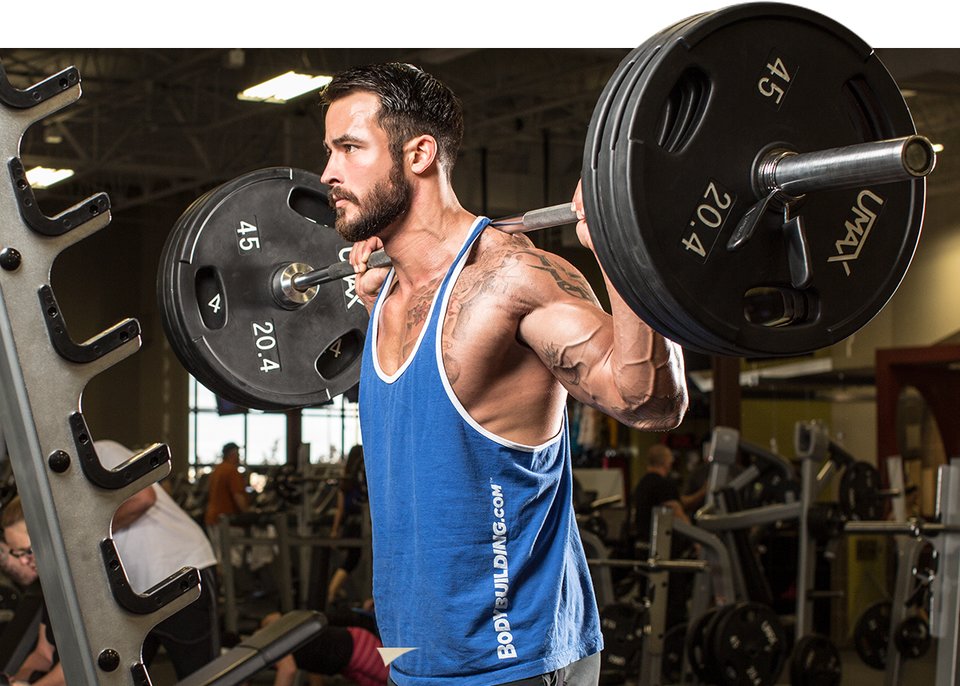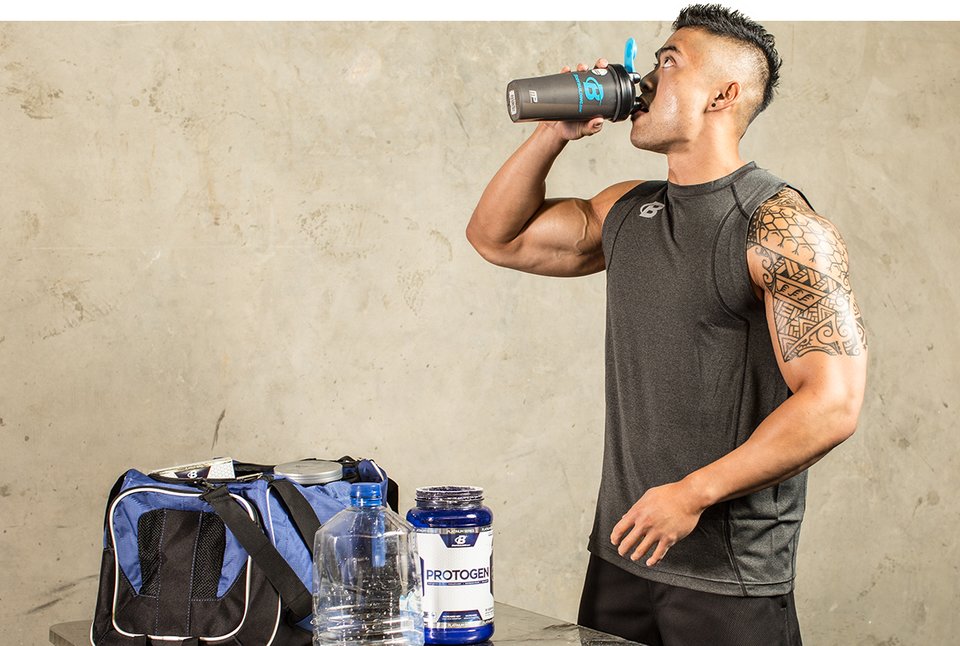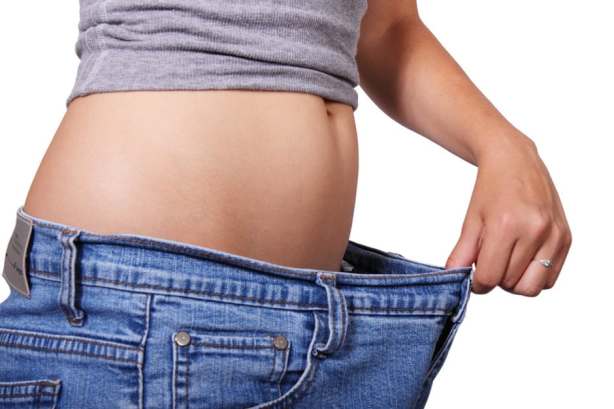LOSE WEIGHT
Do you have trouble losing weight? Or would you like to lose faster? You’ve come to the right place.
The sad truth is that conventional ideas – eat less, run more – do not work long term. Counting calories, exercising for hours every day and trying to ignore your hunger? That’s needless suffering and it wastes your time and precious willpower. It’s weight loss for masochists. Eventually almost everyone gives up. That’s why we have an obesity epidemic.
Fortunately there’s a better way. Get ready for effortless weight loss.
The bottom line? Your weight is hormonally regulated. All that’s necessary is reducing your fat-storing hormone, insulin, and you’ll effortlessly lose excess weight.
Below is a practical step-by-step guide to do exactly that.
Top 18 Weight-Loss Tips
Are you ready? Here we go.
Are you ready? Here we go.
Start at the top of the list (most important) and go down as far as you need. Click on any tip to read all about it. Perhaps you only need the first piece of advice?
- Choose a low-carb diet.
- Eat when hungry.
- Eat real food.
- Eat only when hungry.
- Measure your progress wisely
- Be persistent.
- Women: Avoid fruit.
- Men: Avoid beer.
- Avoid artificial sweeteners.
- Review any medications.
- Stress less, sleep more.
- Eat less of dairy products and nuts.
- Supplement vitamins and minerals.
- Use intermittent fasting.
- Exercise smart.
- Achieve optimal ketosis.
- Get your hormones checked
- Consider weight loss pills / drugs (if desperate)
1. CHOOSE A LOW-CARB DIET
If you want to lose weight you should start by avoiding sugar and starch (like bread). This is an old idea: For 150 years or more there have been an infinite number of weight-loss diets based on eating fewer carbs. What’s new is that dozens of modern scientific studies have proven that, yes, low carb is the most effective way to lose weight.
Obviously it’s still possible to lose weight on any diet – just eat fewer calories than you burn, right? The problem with this simplistic advice is that it ignores the elephant in the room: Hunger. Most people don’t like to “just eat less”, i.e. being hungry forever. That’s dieting for masochists. Sooner or later a normal person will give up and eat, hence the prevalence of “yo-yo dieting”.
The main advantage of the low carb diet is that they cause you to want to eat less. Even without counting calories most overweight people eat far fewer calories on low carb. Sugar and starch may increase your hunger, while avoiding them may decrease your appetite to an adequate level. If your body wants to have an appropriate number of calories you don’t need to bother counting them. Thus: Calories count, but you don’t need to count them.
A 2012 study also showed that people on a low-carb diet burned 300 more calories a day – while resting! According to one of the Harvard professors behind the study this advantage “would equal the number of calories typically burned in an hour of moderate-intensity physical activity”. Imagine that: an entire bonus hour of exercise every day, without actually exercising.
Bottom line: A low-carb diet reduces your hunger and makes it easier to eat less. And it might even increase your fat burning at rest. Study after study show that low carb is the smart way to lose weight and that it improves important health markers.
2. EAT WHEN HUNGRY
Don’t be hungry. The most common mistake when starting a low carb diet: Reducing carb intake while still being afraid of fat. Carbs and fat are the body’s two main energy sources, and it needs at least one of them.

Low carb AND low fat = starvation

Low carb AND low fat = starvation
Avoiding both carbs and fat results in hunger, cravings and fatigue. Sooner or later people can’t stand it and give up. The solution is to eat more natural fat until you feel satisfied. For example:
- Butter
- Full-fat cream
- Olive oil
- Meat (including the fat)
- Fatty fish
- Bacon
- Eggs
- Coconut oil, etc.
Always eat enough, so that you feel satisfied, especially in the beginning of the weight-loss process. Doing this on a low-carb diet means that the fat you eat will be burned as fuel by your body, as your levels of the fat storing hormone insulin will be lowered. You’ll become a fat-burning machine. You’ll lose excess weight without hunger.
Do you still fear saturated fat? Don’t. The fear of saturated fat is based on obsolete theories that have been proven incorrect by modern science. Butter is a fine food. However, feel free to eat mostly unsaturated fat (e.g. olive oil, avocado, fatty fish) if you prefer. This could be called a Mediterranean low-carb diet and works great too.
Eating when hungry also implies something else: If you’re not hungry you probably don’t need to eat yet. When on an LCHF diet you can trust your feelings of hunger and satiety again. Feel free to eat as many times per day that works best for you.
Some people eat three times a day and occasionally snack in between (note that frequent snacking could mean that you’d benefit from adding fat to your meals, to increase satiety). Some people only eat once or twice a day and never snack. Whatever works for you. Just eat when you’re hungry.
3. Eat Real Food
Another common mistake when eating a low-carb diet is getting fooled by the creative marketing of special “low carb” products.
Another common mistake when eating a low-carb diet is getting fooled by the creative marketing of special “low carb” products.
Remember: An effective low-carb diet for weight loss should be based on real food, like this:

LCHF Foods
Real food is what humans have been eating for thousands or (even better) millions of years, e.g. meat, fish, vegetables, eggs, butter, olive oil, nuts etc.
If you want to lose weight you’d better avoid special “low-carb” products that are full of carbs. This should be obvious, but creative marketers are doing all they can to fool you (and get your money). They will tell you that you can eat cookies, pasta, ice cream, bread and plenty of chocolate on a low-carb diet, as long as you buy their brand. They’re full of carbohydrates. Don’t be fooled.
Bad Food
If you want to lose weight you’d better avoid special “low-carb” products that are full of carbs. This should be obvious, but creative marketers are doing all they can to fool you (and get your money). They will tell you that you can eat cookies, pasta, ice cream, bread and plenty of chocolate on a low-carb diet, as long as you buy their brand. They’re full of carbohydrates. Don’t be fooled.
Bad Food
How about low-carb bread? Be careful: if it’s baked with grains it’s certainly not low carb. But some companies still try to sell it to you as a low-carb option.
Low-carb chocolate is usually full of sugar alcohols, which the manufacturer does not count as carbs. But roughly half of these carbs may be absorbed, raising blood sugar and insulin. The rest of the carbs ends up in the colon, potentially causing gas and diarrhea. Furthermore, any sweeteners can maintain sugar cravings.
Here are three examples of what to avoid:
Atkins’ Fairy Tale Cookies
Julian Bakery’s High Carb Low Carb Bread
The Dreamfields Pasta Fraud (that finally resulted in an 8 million dollar fine!)
These three companies are not unique. There are thousands of similar companies trying to trick you into buying their “low carb” junk food, full of starch, sugar alcohols, wheat flour, sweeteners and strange additives. Two simple rules to avoid this junk:
Julian Bakery’s High Carb Low Carb Bread
The Dreamfields Pasta Fraud (that finally resulted in an 8 million dollar fine!)
These three companies are not unique. There are thousands of similar companies trying to trick you into buying their “low carb” junk food, full of starch, sugar alcohols, wheat flour, sweeteners and strange additives. Two simple rules to avoid this junk:
Don’t eat “low carb” versions of high carb stuff, like cookies, bars, chocolate, bread, pasta or ice cream – unless you are SURE of the ingredients (perhaps from making it yourself).
Avoid products with the words “net carbs” on them. That’s usually just a way to fool you.
Focus on eating good quality, minimally processed real food. Ideally the food you buy shouldn’t even have a list of ingredients (or it should be very short).
Avoid products with the words “net carbs” on them. That’s usually just a way to fool you.
Focus on eating good quality, minimally processed real food. Ideally the food you buy shouldn’t even have a list of ingredients (or it should be very short).
4. EAT ONLY WHEN HUNGRY
On a low-carb diet you should aim to eat when hungry (see tip #2 above). And if you’re not hungry? Don’t eat. Nothing slows down weight loss more than frequently eating a lot of food that you do not need. This, in fact, is so important that it’s worth this section of it’s own.
REDUCE UNNECESSARY SNACKING
Unnecessary snacking can be a problem on LCHF too. Some things are easy to eat just because they’re tasty and easily available. Here are three common traps to watch out for on LCHF:
- Dairy products such as cream and cheeses. They work well in cooking as it satisfies. The problem is if you’re munching a lot of cheese in front of the TV in the evening… without being hungry. Be careful with that. Or lots of cream with dessert, when you’re actually already full and just keep eating because it tastes good. Or another common culprit: loads of heavy cream in the coffee, many times per day.
- Nuts. It’s very easy to eat until the nuts are gone, regardless of how full you are. A tip: According to science, salted nuts are harder to stop eating than unsalted nuts. Salted nuts tempt you to more overeating. Good to know. Another tip: Avoid bringing the entire bag to the couch, preferably choose a small bowl instead. I often eat all the nuts in front of me, whether I’m hungry or not.
- LCHF baking. Even if you’re only using almond flour and sweeteners snacking on baked goods and cookies usually provides additional eating when you’re not hungry… and yes, this will slow down weight loss.
FEEL FREE TO SKIP MEALS
Do you have to eat breakfast? No, of course not. Don’t eat if you’re not hungry. And this goes for any meal.
On a strict LCHF diet the hunger and urge to eat tends to decrease a lot, especially if you have excess weight to lose. Your body may be happily burning your fat stores, reducing the need to eat.
If this happens, be happy! Don’t fight it by eating food you don’t want. Instead wait for the hunger to return before you eat again. This will save you both time and money, while speeding up your weight loss.
Some people fear that they will lose control if they don’t eat every three hours, thus making them eat thousands of calories and blowing their diets completely. So they obsessively snack all the time.
This obsessive snacking may be necessary on a diet high in sugar/processed carbs to control hunger cravings, but it’s usually completely unnecessary on an LCHF diet. Hunger will only slowly return and you’ll have plenty of time to prepare food or grab a snack.
5. MEASURE YOUR PROGRESS WISELY
Tracking successful weight loss is sometimes trickier than you’d think. Focusing only on weight and stepping on the scale every day might be misleading, cause unnecessary anxiety and undermine your motivation for no good reason.
The scale is not necessarily your friend. You may want to lose fat – but the scale measures muscles, bone and internal organs as well. Gaining muscle is a good thing. Thus weight or BMI are imperfect ways to measure your progress. This is especially true if you’re just coming off a long period of semi-starvation (calorie counting), as your body may want to restore lost muscles etc. Starting weight training and gaining muscle can also hide your fat loss.
Losing fat and gaining muscles means great progress, but you may miss this if you only measure your weight. Thus it’s smart to also track the disappearance of your belly fat, by measuring your waist circumference.
6. BE PERSISTENT
It usually takes years or decades to gain a lot of weight. Trying to lose it all as quickly as possible by starving yourself rarely works well long-term, that’s just a recipe for “yo-yo dieting”. To succeed, you need something that works long term.
WHAT TO AIM FOR
It’s common to lose 2-6 pounds (1-3 kg) within the first week on a strict low-carb diet, and then on average about one pound (0.5 kg) per week as long as you have a lot of weight remaining to lose. This translates into about 50 pounds (23 kilos) per year.
Every 5 pounds of fat loss roughly equals 1 inch lost around the waist (1 kilo = 1 cm).
Young males sometimes lose weight faster than this, perhaps twice as fast. Post-menopausal women may lose at a slightly slower pace. People on a very strict low-carb diet may lose weight quicker, as well as those who exercise a lot (a bonus). And if you have an enormous amount of excess weight to lose you could start out much faster.
As you get closer to your ideal weight the loss may slow down, until you stabilize at a weight that your body feels is right. Very few people becomes underweight on a low carb diet – as long as they eat when hungry.
INITIAL STALLS
Are you coming off a period of semi-starvation (calorie counting)? Focus on your waist circumference and health markers (see advice #4) at first as it sometimes takes several weeks before weight loss is apparent.
WEIGHT-LOSS PLATEAUS
Expect weight-loss plateaus: Days or weeks where nothing seems to happen on the scale. Everybody hits them. Stay calm. Keep doing what you’re doing and eventually things will start happening again (if not, check out the other 16 tips).
HOW TO LOSE WEIGHT FOREVER
Losing a lot of weight long-term and keeping it off forever won’t happen unless you change your habits forever. If you lose weight and then return to living exactly the way did when you gained weight, don’t be surprised when the excess weight returns. It will.
7. WOMEN: AVOID EATING FRUIT
This is a tip that goes for men as well, of course, but eating fruit is a more common obstacle for women trying to lose weight.
This advice is controversial as fruit has an almost magical health aura today. People may believe that fruit is nutritious but unfortunately fruit contains a lot of sugar – around 10% by weight (the rest is mostly water). Just taste an orange or a grape. Sweet, right?
Five servings of fruit per day are equivalent to the amount of sugar in 16 ounces of soda (500 ml). Contrary to what many people believe, the sugar is more or less identical (about 50% glucose, 50% fructose).
Sugar from fruit can shut down fat burning. This can increase your hunger and slow your weight loss. For best results avoid fruit – or enjoy it occasionally as a treat.
Bottom line: Fruit is candy from nature.
8. MEN: AVOID DRINKING BEER

This applies to women too, but men drink more beer on average. Beer contains rapidly digested carbs that shut down fat burning. That’s why beer is sometimes referred to as “liquid bread”. There’s a good reason for the term “beer belly.”
Here are smarter alcoholic options for losing weight:
- Wine (red or dry white)
- Dry champagne
- Hard liquor like whisky, cognac, vodka (avoid sweetened cocktails – try vodka, soda water, lime instead)
These drinks hardly contain any sugar/carbohydrates so they’re better than beer. However, large amounts of alcohol might slow weight loss somewhat, so moderation is still a good idea.
9. AVOID ARTIFICIAL SWEETENERS
Many people replace sugar with artificial sweeteners in the belief that this will reduce their calorie intake and cause weight loss. It sounds plausible. Several studies, however, have failed to show any positive effect on weight loss by consuming artificial sweeteners instead of plain sugar.

Instead, according to scientific studies, artificial sweeteners can increase appetite and maintain cravings for sweet food. And one recent independent study showed that switching drinks with artificial sweeteners to water clearly helped women lose weight:
10. REVIEW ANY MEDICATIONS
Many prescription drugs can stall your weight loss. Discuss any change in treatment with your doctor. Here are the worst three:
- Insulin injections, especially at higher doses, are probably the worst obstacle for weight loss. There are three ways to reduce your need for insulin:
A. Eat fewer carbs,which makes it a easier to lose weight. The fewer carbs you eat the less insulin you need. Remember to lower your doses if you can.
B. If this isn’t enough, treatment with Metformin tablets (at a dose of 2–3 grams/day) can decrease the need for insulin (at least for type 2 diabetics).
C. If this is not enough to get off insulin (again, for type 2 diabetics) you could try newer promising drugs like Victoza or Byetta. These reduce the need for insulin and cause weight loss.  Other diabetes medications. Insulin-releasing tablets (e.g. sulphonylureas) often lead to weight gain. These include: Minodiab, Euglucon, Daonil, and Glibenclamide. Tablets like Avandia, Actos, Starlix and NovoNorm also encourage weight gain. But not Metformin. The newer drugs Victoza and Byetta (injectable) often lead to weight loss, but possible long-term side effects are still unknown.
Other diabetes medications. Insulin-releasing tablets (e.g. sulphonylureas) often lead to weight gain. These include: Minodiab, Euglucon, Daonil, and Glibenclamide. Tablets like Avandia, Actos, Starlix and NovoNorm also encourage weight gain. But not Metformin. The newer drugs Victoza and Byetta (injectable) often lead to weight loss, but possible long-term side effects are still unknown.- Cortisone as an oral drug is another common culprit (e.g. Prednisolone). Cortisone often causes weight gain in the long run, especially at higher doses (e.g. more than 5 mg Prednisolone per day). Unfortunately, cortisone is often an essential medication for those who are prescribed it, but the dose should be adjusted frequently so you don’t take more than you need. Asthma inhalers and other local cortisone treatments, like creams or nose sprays, hardly affect weight.
11. STRESS LESS, SLEEP MORE

Have you ever wished for more hours of sleep, and a less stressful life in general? Most people have – stress and lack of sleep can be bad news for their weight.
Chronic stress may increase levels of stress hormones such as cortisol in your body. This can cause increased hunger and result in weight gain. If you’re looking to lose weight, you should review possible ways to decrease or better handle excessive stress in your life. Although this often demands substantial changes, even altering small things – such as posture – may immediately affect your stress hormone levels, and perhaps your weight.
You should also make an effort to get enough good sleep, preferably every night. Strive to wake up refreshed of your own accord, independently of the alarm clock. If you’re the kind of person who always gets brutally woken up by the alarm ringing, you might never be giving your body adequate rest.
One way to combat this is to go to bed early enough for your body to wake up autonomously before the alarm clock goes off. Letting yourself get a good night’s sleep is another way of reducing stress hormone levels.
Sleep deprivation, on the other hand, comes hand in hand with sugar cravings. It also has an adverse effect on self-discipline and makes it painfully easy to give in to temptation (it’s no coincidence that induced sleep deprivation is a common interrogation technique). Similarly, sleep deprivation weakens your resolve to work out.
12. EAT LESS OF DAIRY PRODUCTS AND NUTS

Can you eat as much as you like, and still lose weight? Yes, it tends to work just fine with a low-carbohydrate diet, as appetite regulation happens effortlessly.
However, despite the fact that a low-carbohydrate diet generally makes it easy to eat just enough, there are foods classified as low carb which become a problem in larger quantities. If you find yourself having a hard time losing weight on a low carb diet, you could try to be more careful with:
- Dairy products (yoghurt, cream, cheese)
- Nuts
Dairy products contain varying amounts of lactose (milk sugar), which slows down weight loss. What’s more, part of the protein in milk generates a significant insulinresponse, which can have the same effect. Consequently, cutting back on dairy products may accelerate weight loss. This applies especially to dairy products typically lacking in fat, such as regular milk and various yogurts, but be careful with full-fat dairy such as cream and cheese all the same. And don’t forget whey protein powder, which is pure milk protein.
Exempt from all these dairy-product warnings is butter, which is almost pure fat. Butter may be consumed liberally as desired.
13. SUPPLEMENT VITAMINS AND MINERALS

Your body needs a certain amount of essential vitamins and minerals to function properly. What happens when you don’t get enough of them? What happens when you eat too little food, or when the food you eat isn’t sufficiently nutritious? Perhaps our bodies catch on and reply by increasing hunger levels. After all – if we eat more, we increase the chances of consuming enough of whatever nutrient we are lacking.
On the other hand, reliable access to vitamins and minerals could perhaps mean decreased hunger levels and decreased cravings, thereby promoting weight loss.
The above is, of course, speculation. But there are well-performed studies which suggest it might not be far from the truth.
VITAMIN D
A lack of vitamin D is probably the most common deficiency in northern countries such as Canada, or most of the US. Three recent studies indicate that, when compared to a placebo, a vitamin D supplement can decrease your fat weight or waist measurement [1 2 3].
In one of the studies,77 overweight or obese women received either a supplement of 1000 units of vitamin D, or a placebo, every day for 3 months. Those who tookthe vitamin D supplement decreased their body fat by 2.7 kg (6 pounds) – significantly more than the placebo group, who hardly decreased their fat weight at all.
14. USE INTERMITTENT FASTING
There are many things to consider before moving on to this tip #14, but don’t let this fool you. This is one of the most effective weapons available to lose weight. It’s perfect if you are stuck at a weight-loss plateau despite “doing everything right” – or to speed up your weight loss.
This super weapon is called intermittent fasting. It means exactly what it sounds like… not eating, during a specified time interval.



